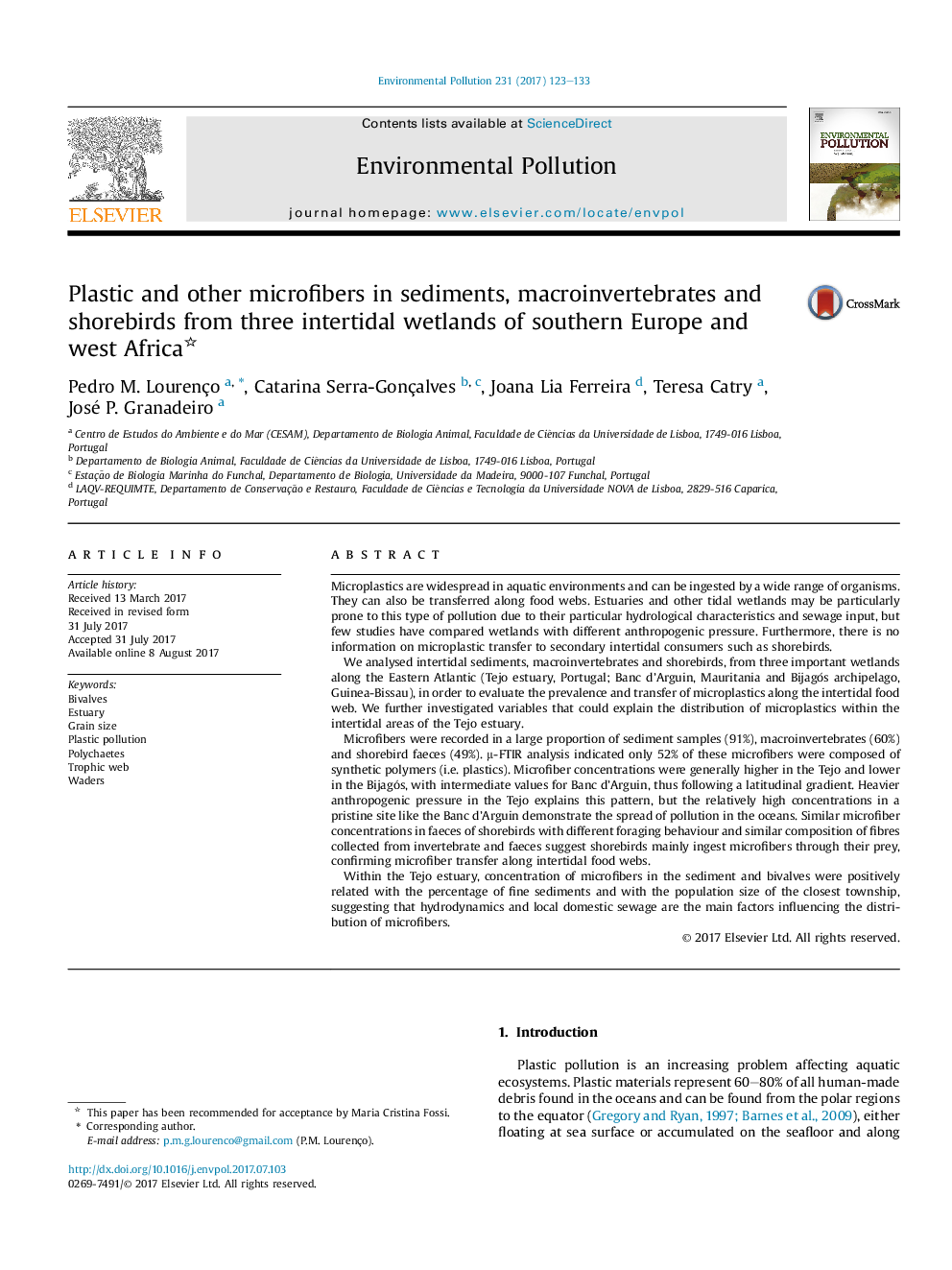| کد مقاله | کد نشریه | سال انتشار | مقاله انگلیسی | نسخه تمام متن |
|---|---|---|---|---|
| 5748554 | 1619142 | 2017 | 11 صفحه PDF | دانلود رایگان |
- Microfibers are widespread in all three studied wetlands.
- We report for the first time microfibers in shorebird faeces and gizzards.
- Microfibers in sediment and animals are more abundant in the most humanised site.
- Shorebirds appear to mainly ingest microfibers indirectly through their prey.
- Abundance of microfibers correlates with grain size and human population size.
Microplastics are widespread in aquatic environments and can be ingested by a wide range of organisms. They can also be transferred along food webs. Estuaries and other tidal wetlands may be particularly prone to this type of pollution due to their particular hydrological characteristics and sewage input, but few studies have compared wetlands with different anthropogenic pressure. Furthermore, there is no information on microplastic transfer to secondary intertidal consumers such as shorebirds.We analysed intertidal sediments, macroinvertebrates and shorebirds, from three important wetlands along the Eastern Atlantic (Tejo estuary, Portugal; Banc d'Arguin, Mauritania and Bijagós archipelago, Guinea-Bissau), in order to evaluate the prevalence and transfer of microplastics along the intertidal food web. We further investigated variables that could explain the distribution of microplastics within the intertidal areas of the Tejo estuary.Microfibers were recorded in a large proportion of sediment samples (91%), macroinvertebrates (60%) and shorebird faeces (49%). μ-FTIR analysis indicated only 52% of these microfibers were composed of synthetic polymers (i.e. plastics). Microfiber concentrations were generally higher in the Tejo and lower in the Bijagós, with intermediate values for Banc d'Arguin, thus following a latitudinal gradient. Heavier anthropogenic pressure in the Tejo explains this pattern, but the relatively high concentrations in a pristine site like the Banc d'Arguin demonstrate the spread of pollution in the oceans. Similar microfiber concentrations in faeces of shorebirds with different foraging behaviour and similar composition of fibres collected from invertebrate and faeces suggest shorebirds mainly ingest microfibers through their prey, confirming microfiber transfer along intertidal food webs.Within the Tejo estuary, concentration of microfibers in the sediment and bivalves were positively related with the percentage of fine sediments and with the population size of the closest township, suggesting that hydrodynamics and local domestic sewage are the main factors influencing the distribution of microfibers.
191
Journal: Environmental Pollution - Volume 231, Part 1, December 2017, Pages 123-133
